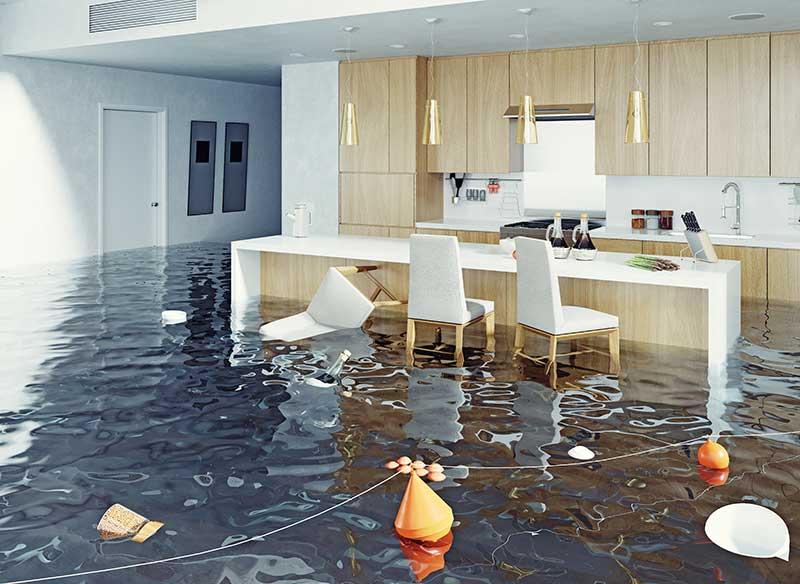NEWS
Exploring the Power of GitLab for Scientific Collaboration in TotallyScience
Published
6 months agoon
By
Saad
Welcome to the scientific world of collaborative research and innovation! In today’s digital age, where every discovery brings us closer to unlocking the mysteries of the universe, effective collaboration is key. And that’s where GitLab comes in – a powerful platform that revolutionizes scientific collaboration like never before.
GitLab is not just your run-of-the-mill version control system; it’s a game-changer for scientists, researchers, and innovators who are looking to collaborate seamlessly on projects. With its robust features and user-friendly interface, GitLab empowers teams to work together efficiently, accelerating scientific breakthroughs across disciplines.
In this blog post, we will delve into the power of GitLab for scientific collaboration in TotallyScience. We’ll explore its remarkable features and discover how they can transform the way scientists work together. Whether you’re part of a small research team or an international consortium tackling complex challenges, GitLab has something extraordinary to offer.
So fasten your lab coats and put on your goggles as we embark on this thrilling journey through the wonders of GitLab for scientific collaboration! Get ready to witness firsthand how this innovative platform fosters teamwork, enhances productivity, and paves the way for groundbreaking discoveries in every field imaginable. Let’s dive in!
Benefits of using GitLab for scientific collaboration in TotallyScience
GitLab is a powerful platform that offers numerous benefits for scientific collaboration in TotallyScience. One of the key advantages is its ability to provide a centralized repository for research projects, allowing scientists from different disciplines and locations to collaborate seamlessly. Using GitLab, researchers can easily access and contribute to shared code, data, and documentation.
Another benefit of using GitLab is its version control system, which enables scientists to track changes made to their work over time. This feature is particularly valuable in scientific collaborations as it allows researchers to review and revert to previous versions if needed. It also promotes transparency and reproducibility by documenting the evolution of the project.
In addition, GitLab’s issue-tracking system facilitates efficient communication among team members. Scientists can create tasks, assign them to collaborators, and monitor progress within the platform. This streamlines workflow management and ensures that everyone stays on track with project milestones.
Furthermore, GitLab supports continuous integration (CI) pipelines, which automate testing and deployment processes. For scientific projects involving complex analyses or simulations, this feature saves time and reduces errors by automatically running tests whenever new code or changes are pushed.
Collaborators can also take advantage of GitLab’s built-in wiki functionality for creating comprehensive project documentation. This makes it easier for team members to understand each other’s work without having to navigate through multiple files or folders.
Adopting GitLab for scientific collaboration in TotallyScience brings numerous benefits such as centralized repositories for easy access and contribution; version control capabilities that promote transparency; an issue tracking system for efficient communication; CI pipelines for automated testing; and built-in wiki functionality for comprehensive documentation creation. With these features at their disposal, scientists can streamline their workflows, promote reproducibility, and enhance overall productivity within collaborative research endeavors.
Case studies of successful collaborations using GitLab in the scientific community
1. Cancer Research Collaboration:
A team of researchers from different institutions collaborated on a groundbreaking cancer research project using GitLab. By utilizing GitLab’s version control system, they were able to seamlessly manage their code and data files across multiple branches and repositories. This enabled them to work concurrently on different aspects of the project without any conflicts or confusion.
2. Climate Change Modeling Project:
A group of scientists working on climate change modeling used GitLab to streamline their collaboration process. They leveraged GitLab’s issue-tracking feature to assign tasks, track progress, and resolve any issues that arose during the project. With all communication centralized within GitLab, team members could easily stay updated on each other’s work and provide feedback in real time.
3. Drug Discovery Initiative:
In a collaborative effort between pharmaceutical companies and academic institutions, researchers utilized GitLab for their drug discovery initiative. They took advantage of GitLab’s continuous integration capabilities, ensuring that code changes were automatically tested before being merged into the main repository. This reduced errors and improved efficiency throughout the development process.
4. Genomics Research Project:
Scientists studying genomics used GitLab for their large-scale research project involving complex genomic data analysis pipelines. With its robust support for handling big data files, they could efficiently share and collaborate on datasets without worrying about storage limitations or transfer issues.
These case studies highlight how scientific collaborations have benefited from adopting GitLab as their collaboration platform of choice.
The seamless integration with existing tools along with its powerful features makes it an ideal solution for fostering efficient teamwork in scientific projects.
How to get started with GitLab for scientific projects
Getting started with GitLab for scientific projects is easier than you might think. Whether you’re a seasoned researcher or just starting, this powerful collaboration platform can revolutionize how you work in the scientific community.
First and foremost, create an account on GitLab and familiarize yourself with its features. Take some time to explore the user interface and understand how different components like repositories, issues, and merge requests function within GitLab’s ecosystem.
Next, set up your project repository by creating a new project or importing an existing one. This will serve as the central hub for all your scientific data, code, and documentation. Organize your files into logical directories to keep everything organized and easily accessible.
Collaboration is key when it comes to scientific research. Invite team members to join your project on GitLab so that everyone can contribute their expertise effectively. Utilize features like issue tracking and merge requests to streamline communication, review code changes, and resolve conflicts efficiently.
To optimize collaboration even further, consider integrating other tools and platforms with GitLab. For example, you can connect continuous integration (CI) pipelines to automatically run tests whenever changes are made to your codebase. This ensures that any potential issues are caught early on in the development process.
As you dive deeper into using GitLab for scientific projects, take advantage of its version control capabilities. With every change recorded in detail, it becomes easy to track progress over time and revert if needed.
Remember that learning any new tool takes time and practice. Don’t be afraid to seek help from online resources such as documentation guides or forums dedicated specifically to working with GitLab for scientific collaborations.
Tips for optimizing collaboration and workflow on GitLab
1. Use a clear and consistent project structure: Establishing a well-organized project structure is essential for efficient collaboration on GitLab. Create clear directory structures, name files appropriately, and use consistent naming conventions to ensure everyone can easily navigate and locate the required files.
2. Leverage the power of branches: GitLab allows users to create branches for different features or experiments within a project. This feature enables team members to work on separate tasks simultaneously without interfering with each other’s progress. It also facilitates easy merging of changes back into the main branch.
3. Regularly communicate and update: Communication is key in any collaborative effort, especially when working remotely or across different time zones. Utilize GitLab’s built-in communication tools like issue tracking, comments, and merge request discussions to stay connected with your team members.
4. Automate processes with CI/CD pipelines: Take advantage of GitLab’s continuous integration/continuous deployment (CI/CD) pipelines to automate repetitive tasks such as building, testing, and deploying code changes. This helps streamline the development process by reducing manual errors and improving overall efficiency.
5. Embrace code reviews: Code reviews are crucial in maintaining high-quality codebases while fostering knowledge sharing among team members. Encourage regular code reviews using GitLab’s merge requests feature, allowing peers to provide feedback, catch bugs early on, and improve overall codebase quality.
6. Integrate relevant tools: Extend the capabilities of GitLab by integrating it with other useful tools that your team relies on daily – whether it’s project management software like Jira or chat platforms like Slack or Microsoft Teams – seamless integration enhances productivity by bringing everything together under one roof.
By following these tips for optimizing collaboration and workflow on GitLab, you can unlock its full potential for scientific projects in TotallyScience!
Integrating other tools and platforms with GitLab for enhanced efficiency
Integrating other tools and platforms with GitLab can significantly enhance efficiency in scientific collaboration. One of the key advantages of GitLab is its ability to seamlessly integrate with a wide range of tools and platforms, allowing researchers to streamline their workflows and maximize productivity.
For instance, integrating GitLab with project management tools such as Trello or Asana enables teams to effectively track tasks, set deadlines, and monitor progress. This integration ensures that everyone involved in the project has a clear understanding of their responsibilities and helps maintain transparency throughout the collaboration process.
Additionally, integrating continuous integration (CI) tools like Jenkins or Travis CI with GitLab allows for automated testing and deployment. This means that code changes are automatically tested against predefined criteria before being merged into the main branch. By automating these processes, researchers can save time and ensure code quality without manual intervention.
Furthermore, integrating communication platforms like Slack or Microsoft Teams with GitLab facilitates seamless communication among team members. It enables quick decision-making by providing real-time updates on project developments while keeping all conversations organized within one central platform.
Moreover, by integrating data visualization tools such as Tableau or Plotly with GitLab repositories containing datasets or analysis scripts, scientists can easily generate interactive visualizations for better data interpretation and sharing insights within their research community.
Future possibilities and developments for scientific collaboration on GitLab
As the scientific community continues to evolve, so does the need for efficient collaboration platforms. GitLab has already made significant strides in supporting scientific collaboration, but what does the future hold? Here are some exciting possibilities and developments that we can expect to see:
1. Enhanced Data Management: One area where GitLab can continue to excel is in managing large datasets. With advancements in technology, we can anticipate improved storage capabilities and more streamlined processes for handling complex data.
2. Integrated Analysis Tools: Integrating analysis tools directly into GitLab would be a game-changer for scientists. Imagine being able to run statistical analyses or visualize data right within your project repository! This integration would save time and eliminate the need to switch between different applications.
3. Machine Learning Integration: With machine learning becoming increasingly important in scientific research, incorporating ML models into GitLab could revolutionize collaborations. Researchers could train models on shared data within their repositories, enabling them to make predictions or automate certain tasks.
4. Virtual Reality Collaboration: The future of collaboration may also involve virtual reality (VR) environments where researchers from around the world can meet virtually and work together as if they were in the same room. This immersive experience could enhance communication and foster creativity among teams.
5. Blockchain Technology Integration: Blockchain technology has gained traction across various industries, including science. By integrating blockchain with GitLab, scientists could ensure secure data sharing, transparent version control, and immutable records of contributions – all essential aspects of collaborative research.
6. Community-driven Development: As more scientists adopt GitLab for their projects, an active community will emerge around it—sharing best practices, developing plugins/extensions specific to scientific workflows, and driving continuous improvement based on user feedback.
The potential for further innovation within scientific collaboration on GitLab is immense! By embracing emerging technologies like VR or blockchain integration while focusing on improving existing features like data management and analysis tools, GitLab is poised to become an even more powerful platform for
Conclusion
GitLab is a powerful platform that offers numerous features and benefits for scientific collaboration in the TotallyScience community. Its version control capabilities, issue tracking system, and collaborative tools make it an ideal choice for researchers and scientists looking to streamline their workflows and enhance collaboration.
By leveraging GitLab, scientists can easily manage project documentation, track changes, and collaborate with team members from around the world. The case studies highlighted earlier demonstrate how various scientific communities have successfully utilized GitLab to accelerate research progress and achieve breakthroughs.
To get started with GitLab for scientific projects, researchers should familiarize themselves with its features and functionalities. They can create repositories to store their code or data files, use branches to work on different aspects of the project simultaneously and leverage merge requests to review changes made by collaborators.
Optimizing collaboration on GitLab involves establishing clear guidelines for communication and workflow management. Regularly updating project documentation keeps everyone informed about ongoing developments. Utilizing labels helps categorize issues or tasks based on priority or type.
Integrating other tools such as Jupyter Notebooks or continuous integration pipelines further enhances efficiency within the GitLab environment. By automating certain processes like testing code changes or generating reports, researchers can save time while ensuring quality control.
Looking ahead, there are exciting possibilities for developing even more advanced features tailored specifically for scientific collaboration on GitLab. This could include integrating data visualization tools directly into repositories or incorporating machine learning algorithms for automated analysis of large datasets.
Hi, I am Saad Qureshi and I am working since 2017 in this field with 5 years of experience in SEO and Guest posting. My range of services includes Article Posting on Authority Sites.

You may like
NEWS
Why Fiskning is the Ultimate Outdoor Adventure Activity
Published
2 months agoon
May 27, 2024By
Saad
Here in the exciting realm of Fiskning, excitement, and peace of mind coexist in the wide outdoors. The best outdoor activity if you want to mix adrenaline and leisure is Fiskning. Come explore with us the background, advantages, must-have gear, top travel spots, safety advice, and how Fiskning can change your outdoor adventures. Prepare to fully experience fishing as never before!
Fiskning History and Origins
Are you curious about the background and beginnings of Fiskning, the ultimate outdoor adventure sport? Fiskning has its origins in prehistoric Scandinavian societies where fishing was a way of life as much as a source of food.
Fishing became deeply embedded in the culture in these rough regions surrounded by magnificent fjords and glistening waterways as a means of sustaining communities and fostering a connection with nature. Fiskning became a popular past leisure for people of all ages worldwide as it developed from a simple survival technique.
Fiskning is not only a skill, patience, and enjoyment of nature activity; it is also a cultural legacy that should be preserved. As they throw their hooks into calm lakes or raging rivers in quest of that ideal catch, fans of the sport still appreciate the spirit of Fiskning today.
Advantages of Fishing for Mental and Physical Health
The best kind of outdoor adventure sport, fiskning has several advantages for mental and physical health. Fishing in and of itself calls for patience, concentration, and accuracy—qualities that might enhance cognitive performance and lower stress. Practicing Fiskning in the great outdoors helps people to unplug from the daily grind and cultivate mindfulness and calm.
Physically, Fiskning is a terrific approach to keeping active without seeming like you’re working out. A great full-body workout could be had by reeling in a large catch or stumbling across rugged terrain to find the ideal location. Outside time also exposes you to natural sunlight, which raises vitamin D levels and enhances happiness.
Fishing is about interacting with nature, pushing yourself both physically and emotionally, and enjoying the many health advantages that come with this fulfilling outdoor pursuit. It’s not only about catching fish.
Standard Fiskning Gear and Equipment
Equipping for a Fiskning excursion requires the proper gear to be effective and pleasurable.
A reliable fishing rod is a must; more experienced fishermen can choose from lighter spinning rods for novices to more specialist fly fishing rods. Match the specifications of the rod with a dependable reel.
Not to be overlooked is your line; select one that works for the kind of fish you want to catch and the conditions you will be in. Depending on your favorite fishing style, a range of lures or bait will also come in useful.
Must-have additional equipment includes hooks, sinkers, bobbers, and a tackle box to keep everything in order. Not to mention polarized sunglasses to shield your eyes and lessen glare off the water while you search for underwater movement.
Just as crucial to your kit list are comfortable clothes appropriate for the weather and sturdy shoes that can manage a variety of terrains.
Top Fishing Spots Worldwide
Set out on an exhilarating fishing journey and see some of the most stunning locations on Earth to land your biggest catch.
Beautiful fjords and glistening clean seas brimming with fish just ready to be hooked may be found in Scandinavia in nations like Sweden and Norway. Unforgettable fishing experiences are perfectly framed by the stunning scenery.
For those who long for a tropical getaway, travel to Australia or Costa Rica to go fishing in the warm sun amongst fascinating marine life and verdant surroundings. These places’ brilliant hues will make your fishing trip even more exciting.
If you enjoy your fishing and culture mixed, the coastal areas of Japan are perfect for fishermen who want to experience traditional Japanese culture while attempting to catch native species like mackerel and tuna.
Anyplace you decide to throw your line has its special appeal and promises to be an unforgettable fishing experience that will make you want more.
Guide to Safe Fishing
Safety has to be the first concern whenever you go on a Fiskning trip. Look up the water and weather predictions before leaving. To avoid slipping on damp surfaces, dress for the weather and wear appropriate, well-grip shoes.
Remember to pack life jackets and first aid kits among other necessary safety equipment. In case of emergency, it’s also critical to let someone know where you fish and when you anticipate returning.
Even if fisking can be a thrilling sport, you should always be mindful of your surroundings. When working with sharp equipment and hooks, especially around kids or novice fishermen, use caution.
Assure a sustainable experience for the environment and yourself by adhering to local fishing laws and regulations. You may thoroughly enjoy this outdoor experience with peace of mind if you give safety precautions priority when planning your Fiskning excursion.
Finally, how fiskning may be a transformative experience
Fishing is a life-changing event that goes beyond simple leisure. The excitement of landing your first fish and the tranquility of being outdoors provides a special chance to establish a connection with the environment and oneself.
Fiskning offers plenty to offer everyone, whatever of your interests—adventure, leisure, or just some time away from daily life. Try your hand at Fiskning the next time you’re seeking a new outdoor experience; you never know, it might well transform your life.
NEWS
DIY Vs. Professional Water Damage Restoration: Pros and Cons
Published
5 months agoon
March 5, 2024By
Saad
Water damage restoration isn’t as straightforward as it might seem. It involves more than wiping up a few puddles; it requires proper inspection, thorough drying, and sometimes even reconstruction.
Taking on such a project without professional help might save you money upfront but can also lead to long-term issues. Analyzing the benefits and drawbacks of doing your water damage repair is crucial.
Cost
Professionals offer expertise and advanced equipment, allowing them to tackle water damage more thoroughly than homeowners could. This may come at a higher upfront cost, but it can save you money in the long run by reducing future problems like mold growth and structural damage.
Homeowners on a tight budget may find DIY restoration appealing due to its potential cost savings. However, it’s essential to consider all the costs associated with attempting DIY repairs, including time, energy, and risks.
Taking on a DIY restoration project can be a great learning opportunity for homeowners looking to improve their skills. Plus, it’s a chance to take personal pride in their work. But be aware that it’s also a very time-consuming process. Many people are busy, and tackling water damage restoration in the middle of a hectic lifestyle can be challenging. For example, homeowners may work on the project during weekends or after work.
Safety
Many homeowners try DIY projects to save money. In some situations, this makes sense. However, skipping professional water damage restoration Denver services can be more trouble than it’s worth in water damage restoration.
Water damage repair is a complicated process that includes water extraction, thorough drying and dehumidification, meticulous cleaning, and even mold removal. Inexperienced homeowners may make mistakes that lead to additional issues, such as structural damage and mold growth.
It’s also important to consider personal safety when deciding on a DIY project. If you’re dealing with contaminated water (often called “black water”), it may be hazardous to your health. Removing water-logged carpets and other materials can be physically challenging and stressful. DIYers often don’t wear proper safety equipment, and the job can be dangerous even with appropriate gear. I’ve seen countless well-intentioned DIYers get hurt trying to rip out wet carpets or pry up damaged drywall. They can end up with costly injuries and a home that’s less safe for their family.
Time
Water damage can have profound implications if not addressed fast, including structural damage to your property, mold growth, and pricey repairs. When faced with water damage, homeowners may do DIY restoration or hire professional services. Here are some pros and cons to help you decide which option is best for your situation.
Pros: DIY can be cost-effective, especially for minor issues like leaky pipes or spills. It’s also a great way to learn skills and get involved in your home’s maintenance. It can be a rewarding experience, and you will feel a sense of accomplishment once the project is complete.
Cons: It can be very time-consuming to restore your home yourself. Tearing down drywall, removing wet carpet, and using fans and dehumidifiers to extract moisture are labor-intensive tasks. It can take days or even weeks to dry a space completely. This can be inconvenient if you have a busy schedule.
Experience
Homeowners often turn to DIY water damage restoration to save money, but it isn’t easy without experience. Inexperience can lead to missed areas of damage, improper drying techniques, and potential structural problems. These mistakes can cost homeowners much more than their initial out-of-pocket costs; they could also drive up the price of future insurance premiums or long-term repair bills.
Whether to attempt DIY restoration or call in professionals depends on various factors, including the extent of the damage, health and safety concerns, insurance coverage, time constraints, and budget considerations. A DIY approach may be worth the savings for minor water damage within your capabilities. However, hiring a professional service is often safer and more cost-effective for larger-scale or contaminated water damage.
NEWS
A Winter Weather Advisory Issued for northern Minnesota and Northwest Wisconsin.
Published
5 months agoon
March 4, 2024By
Saad
Brrr! Brace yourselves, folks in Northern Minnesota and Northwest Wisconsin – winter is here with a vengeance! A winter weather advisory has been issued, heralding the arrival of snow, ice, and bone-chilling temperatures. It’s time to grab your mittens, stock up on hot cocoa, and hunker down for some serious cold weather ahead. Let’s dive into what this advisory means for you and how to stay safe during the frosty days to come.
What caused the advisory to be issued?
As the temperatures drop and the winds pick up, residents of northern Minnesota and northwest Wisconsin are bracing themselves for a winter weather advisory. The primary cause behind this advisory is an approaching low-pressure system from the west that is expected to bring heavy snowfall and gusty winds to the region. This potent combination can create hazardous conditions on roads, leading to reduced visibility and slippery surfaces.
The National Weather Service has issued this advisory to alert residents of the potential dangers posed by this incoming winter storm. With significant snow accumulation predicted, it’s crucial for people in these areas to take precautions and prepare accordingly. Schools may be closed, travel could be disrupted, and power outages might occur due to downed trees or power lines under the weight of heavy snow.
By staying informed through local news updates and official weather alerts, individuals can stay ahead of any developments as they unfold during this winter weather event. It’s essential for everyone in the affected areas to heed safety recommendations from authorities so that they can navigate through these challenging conditions with caution and awareness.
What areas are affected by the advisory?
As the winter weather advisory sweeps across northern Minnesota and northwest Wisconsin, several areas are expected to be impacted by this upcoming storm. Residents in cities like Duluth, Superior, Grand Marais, and Ashland should prepare for potentially hazardous conditions.
The advisory covers a wide area from the shores of Lake Superior to the inland regions near the Canadian border. Even smaller towns and rural communities in these regions may experience heavy snowfall, strong winds, and freezing temperatures.
Roads and highways in these areas could become treacherous as snow accumulates quickly, reducing visibility and creating slippery driving conditions. Travelers are urged to stay updated on road closures and travel advisories issued by local authorities.
Residents living in these affected areas should stock up on essential supplies like food, water, batteries, blankets, and any necessary medications ahead of the storm. It’s crucial to have a plan in place for power outages or emergencies during severe winter weather events.
Expected weather conditions and potential hazards
The upcoming winter weather in northern Minnesota and northwest Wisconsin is forecasted to bring heavy snowfall, strong winds, and low visibility. These conditions can create hazardous driving conditions, leading to accidents and road closures. Additionally, the weight of the snow accumulation on roofs can pose a risk of collapse.
Residents in the affected areas should prepare for possible power outages due to downed power lines or trees weighed down by snow. It’s essential to have emergency supplies like food, water, blankets, and flashlights readily available in case you lose electricity.
Travel should be limited during this time to reduce the risk of getting stranded on the roads. If you must go out, make sure your vehicle is equipped with winter tires, chains if needed, and an emergency kit.
Stay informed about updated weather forecasts and advisories from local authorities to ensure your safety during this winter storm warning period. Your well-being is a top priority when facing these potential hazards brought on by severe winter weather conditions.
Tips for preparing for winter weather
As winter weather approaches, it’s essential to be prepared for whatever nature may throw your way. Start by checking your heating system to ensure it’s in good working condition. Stock up on supplies like extra blankets, non-perishable food, and water in case of power outages. Don’t forget to have a flashlight with fresh batteries handy.
Make sure your vehicle is equipped with essentials like an ice scraper, shovel, sand or kitty litter for traction, and a fully charged phone in case you need help while driving in snowy conditions. Consider investing in snow tires or chains for added safety on the road.
Keep an emergency kit at home with first aid supplies, medications, and important documents stored in a waterproof container. Stay informed about weather updates and advisories by tuning into local news stations or signing up for alerts on your phone. By taking these proactive steps, you can stay safe and prepared during the winter season.
What to do during a winter storm
When a winter storm hits, it’s important to stay indoors if possible. Keep your home warm by sealing any drafts and using extra blankets or layers of clothing. Make sure you have enough food, water, and medications to last a few days in case of power outages.
If you must go outside, dress warmly in layers and cover exposed skin to prevent frostbite. Use caution when walking on icy sidewalks or roads – wear appropriate footwear with good traction. Drive only if absolutely necessary, and make sure your vehicle is equipped with emergency supplies like a shovel, kitty litter for traction, and a fully charged phone.
Stay informed about weather updates through local news sources or weather apps on your phone. If you lose power, avoid using candles as they pose a fire hazard; opt for flashlights instead. Check on neighbors who may need assistance during the storm – community support is essential during challenging conditions like these.
Conclusion: Stay safe and informed during winter weather advisories
Stay safe and informed during winter weather advisories. Remember to stay updated on the latest weather forecasts, travel warnings, and road conditions. Prepare your home and vehicle for inclement weather by stocking up on supplies like food, water, blankets, and a flashlight. Follow safety guidelines if you must travel during a winter storm, such as driving slowly and keeping a safe distance from other vehicles.
By staying vigilant and taking precautions, you can protect yourself and your loved ones during severe winter weather conditions in Northern Minnesota and Northwest Wisconsin. Stay warm, stay safe!

01174411569 is a unique number that has gained significant attention in recent times. It is not just a number; it represents a revolutionary concept that is reshaping the way we think about communication and connectivity.
History and Origin
The history of 01174411569 can be traced back to [insert year], when [company name] first introduced this concept to the public. Since then, it has evolved into a powerful tool that is used by millions of people around the world.
Benefits of 01174411569
There are several benefits to using 01174411569. One of the key benefits is its ability to [insert benefit]. Additionally, 01174411569 is [insert another benefit].
How Does 01174411569 Work?
01174411569 works by [explain how it works]. This process ensures that users can [explain user benefits].
Use Cases of 01174411569
01174411569 has a wide range of use cases. For example, it can be used for [insert use case]. Additionally, it is also used in [insert another use case].
Comparison with Other Solutions
When compared to other solutions, 01174411569 stands out because of [explain unique selling points].
Future of 01174411569
The future of 01174411569 looks promising, with [explain future prospects].
How to Get 01174411569
To get 01174411569, [explain how to obtain it]. This process is simple and straightforward, ensuring that anyone can [obtain it].
Conclusion
In conclusion, 01174411569 is a revolutionary concept that is changing the way we communicate. With its [list key benefits], it is clear that 01174411569 is here to stay.
FAQs
- Question: What is the cost of 01174411569?
- Answer: The cost of 01174411569 varies depending on [explain cost factors].
- Question: Can I use 01174411569 internationally?
- Answer: Yes, you can use 01174411569 internationally. However, [mention any restrictions].
- Question: Is 01174411569 secure?
- Answer: Yes, 01174411569 is secure. It uses [explain security features].
- Question: How long does it take to set up 01174411569?
- Answer: Setting up 01174411569 is quick and easy, usually taking [mention time frame].
- Question: Can I use my existing number with 01174411569?
- Answer: Yes, you can use your existing number with 01174411569. However, [mention any compatibility issues].
Trending
-

 ENTERTAINMENT5 months ago
ENTERTAINMENT5 months agoHBO Max TV Sign In Guide
-

 FASHION7 months ago
FASHION7 months agoJourney of Sandra Orlow From Aspiring Model to Internet Sensation
-

 TRAVEL6 months ago
TRAVEL6 months agoUnveiling the Beauty: A Closer Look at myfavouriteplaces.org Blog
-

 NEWS7 months ago
NEWS7 months agoBench Craft Company Lawsuit: A Comprehensive Analysis
-

 BUSINESS7 months ago
BUSINESS7 months agoChina SEO Xiaoyan: Pioneering the Path in Chinese Digital Marketing
-

 FASHION5 months ago
FASHION5 months agoThe Rise of Jeansato: A Revolutionary Denim Trend
-

 ENTERTAINMENT5 months ago
ENTERTAINMENT5 months agoGeekzilla Podcast: Navigating the Geek Cosmos
-

 BUSINESS6 months ago
BUSINESS6 months agoThe Inspiring Story of Jose Luis Chavez Calva
